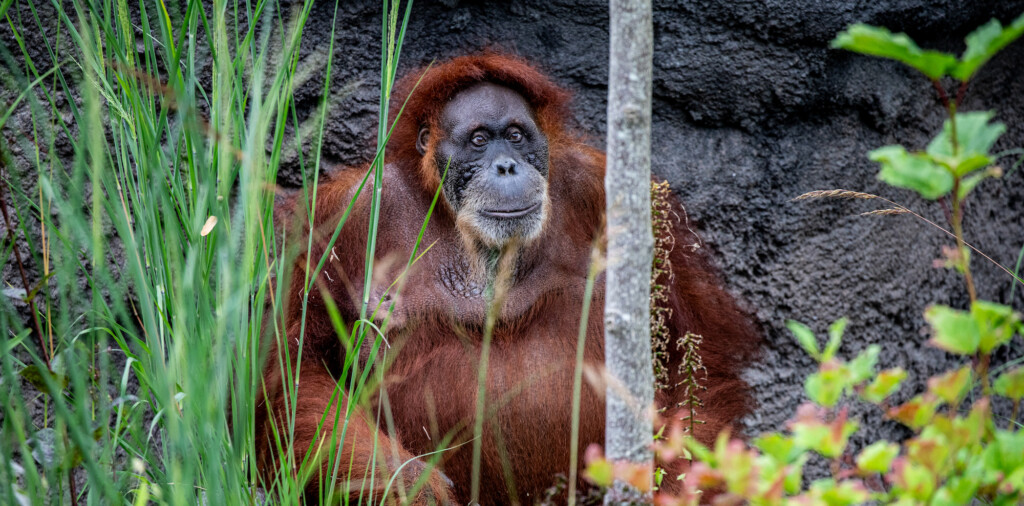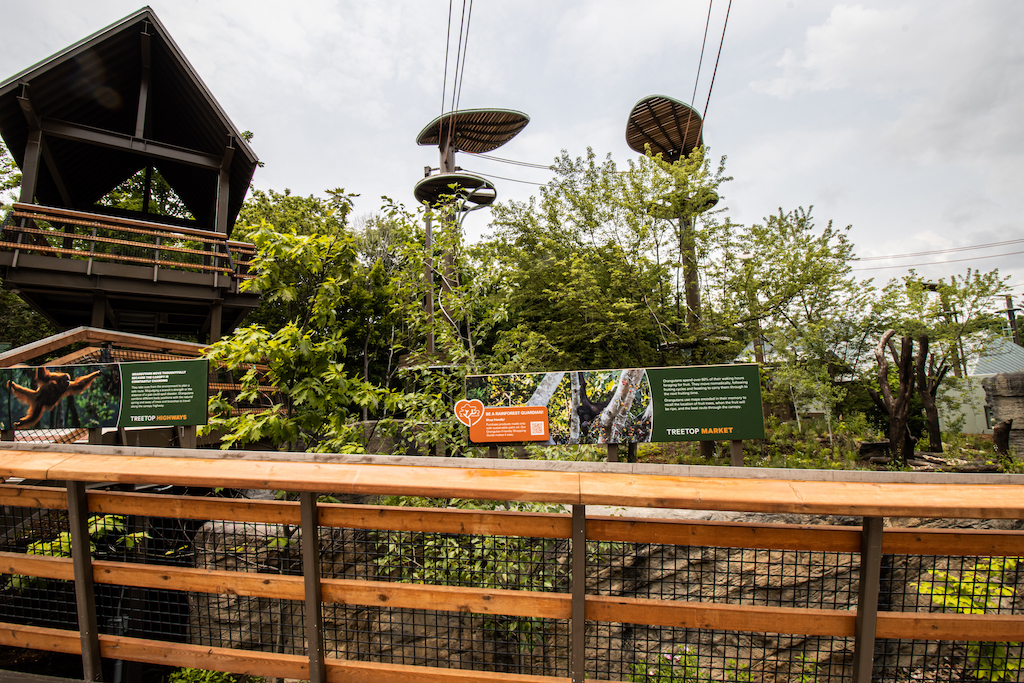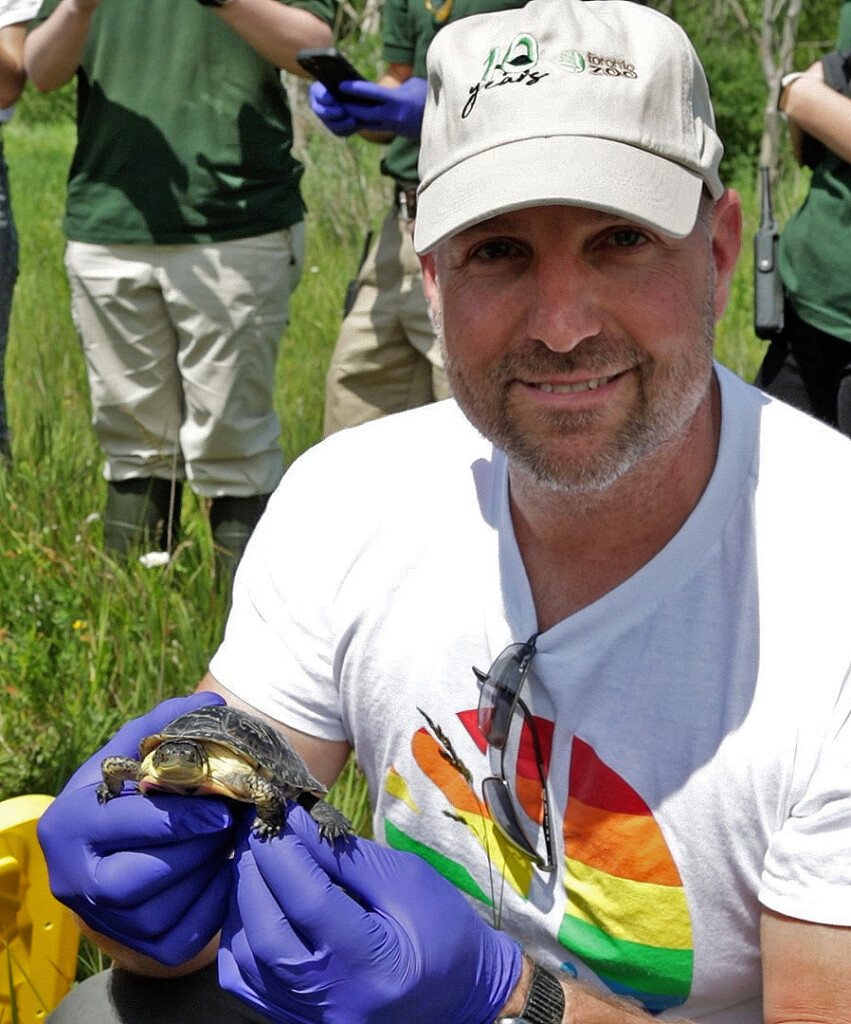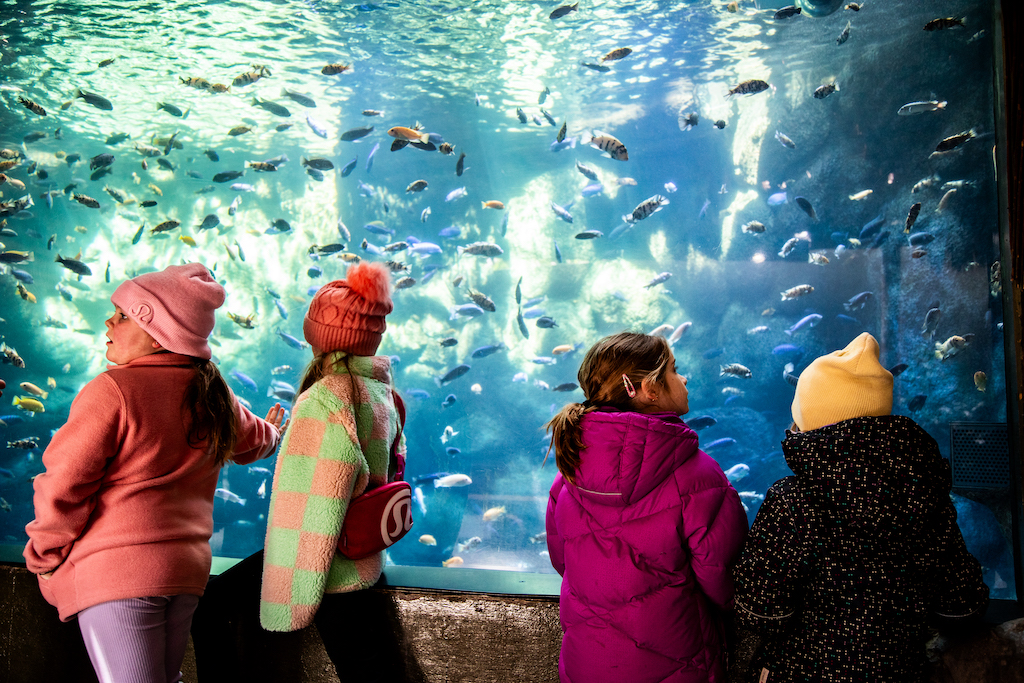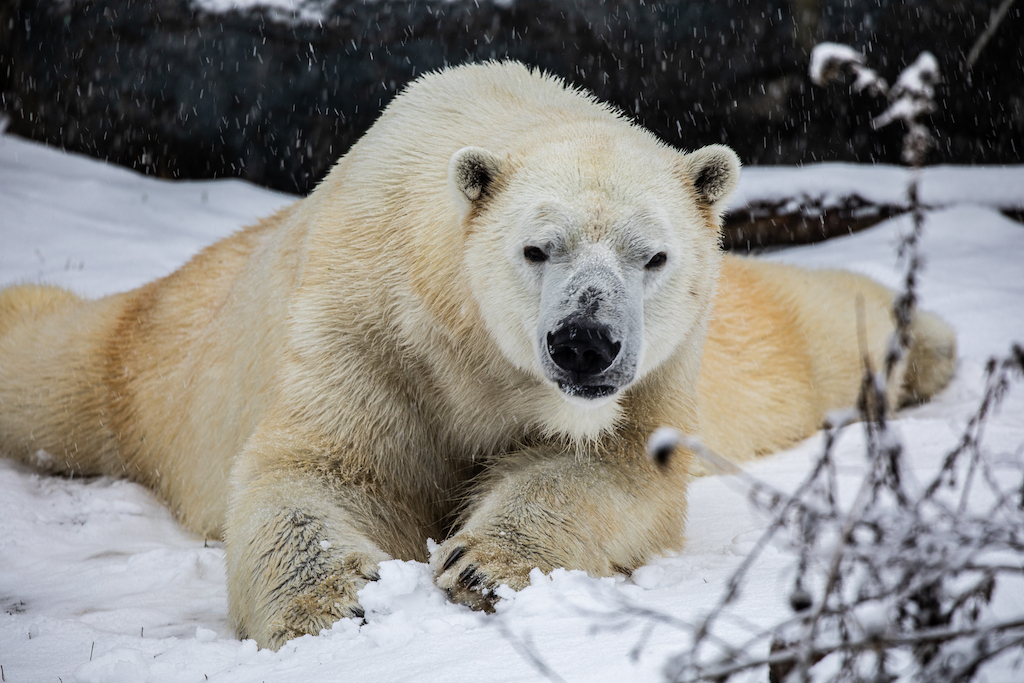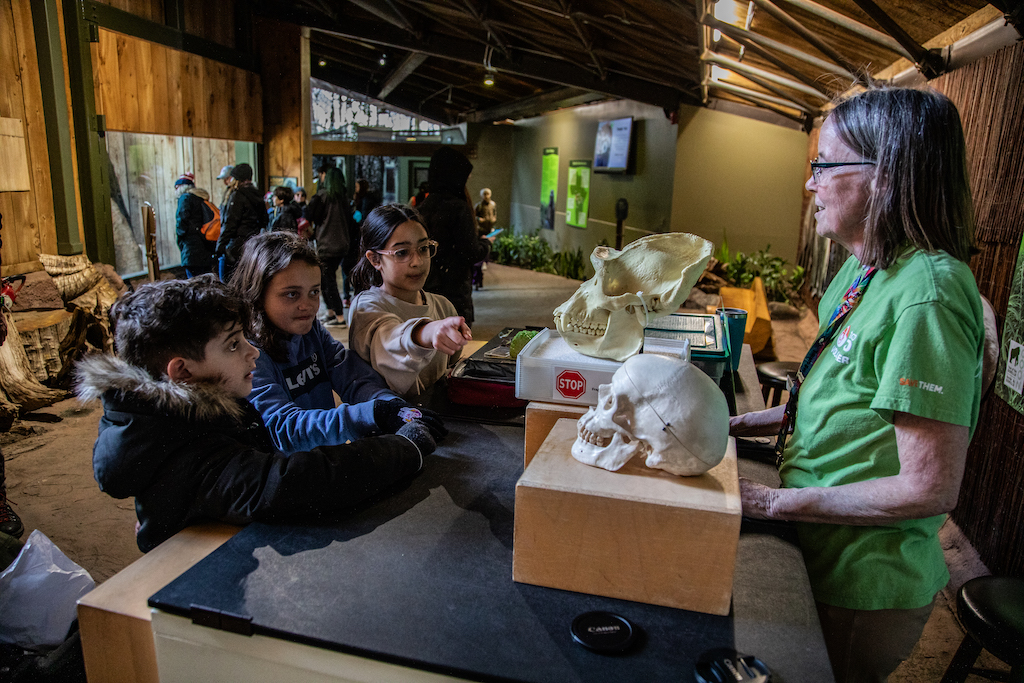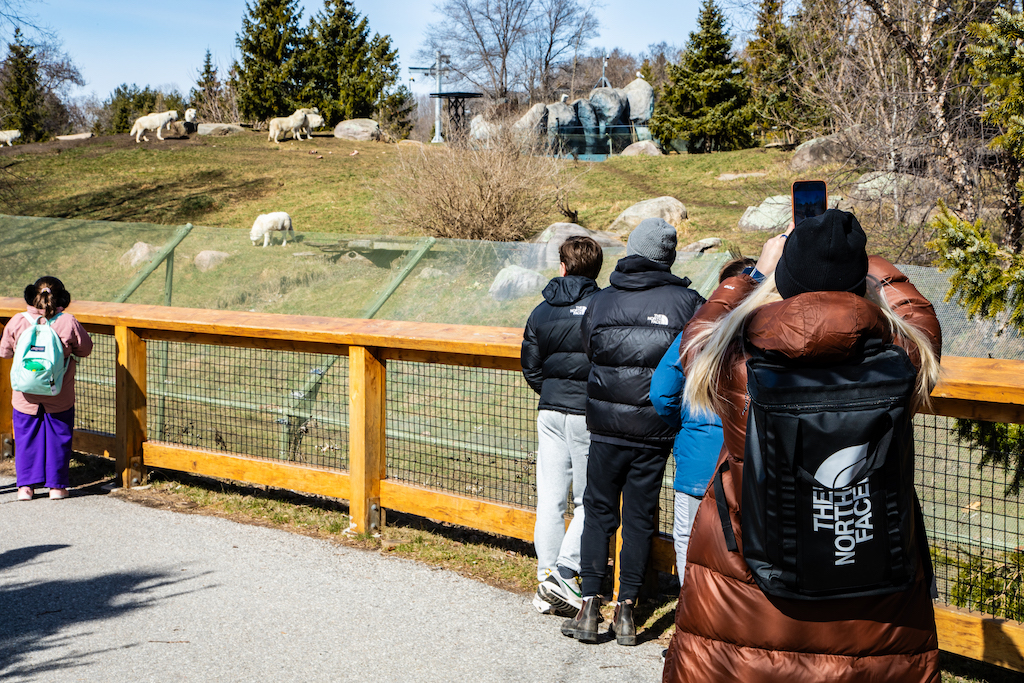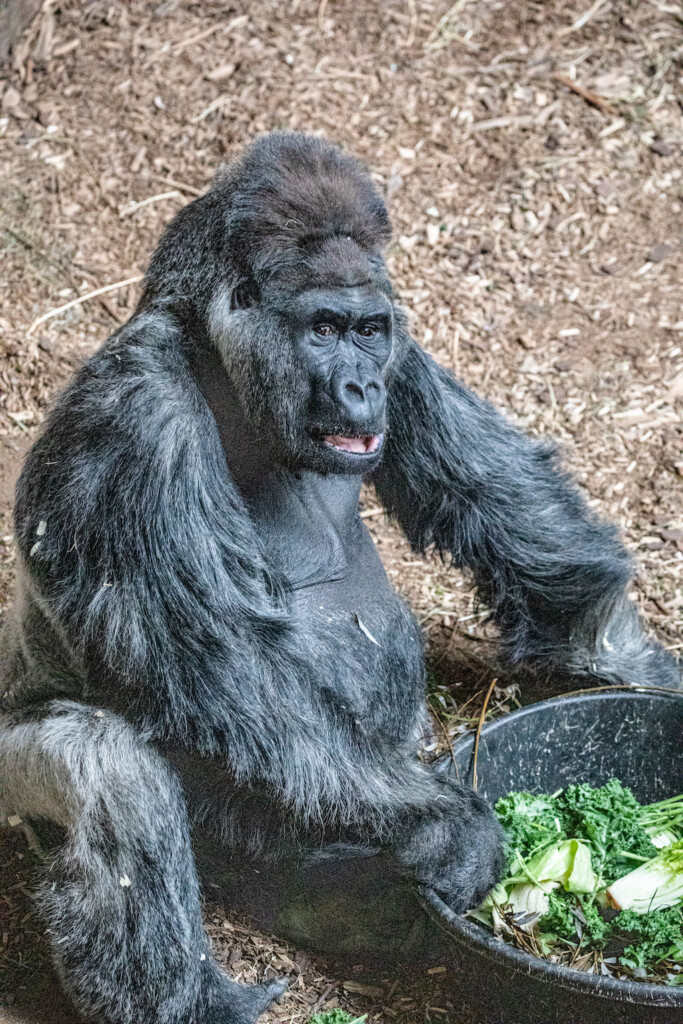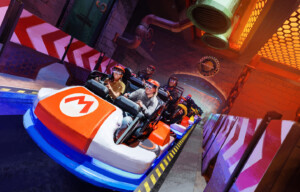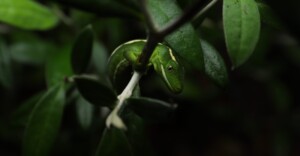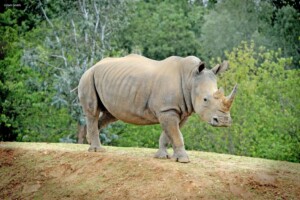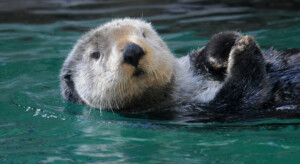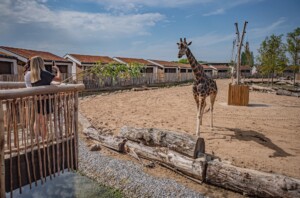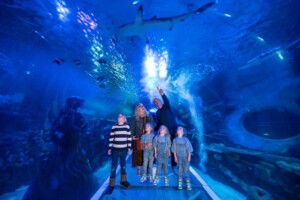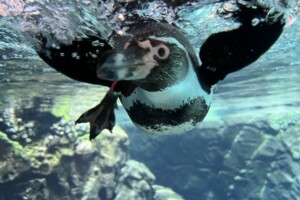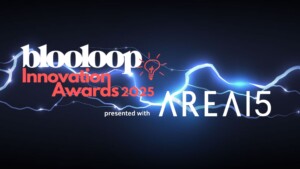Dolf DeJong, CEO of Toronto Zoo, last spoke to blooloop four years ago.
At that point, the zoo’s orangutan habitat was under construction, and DeJong was embarking on a strategic planning process to update the world-class institution, dispense with its behind-the-scenes aspects, open up the doors to draw visitors into formerly hidden processes and facilitate ‘wild encounters’ where people get to experience what it’s like to work at Toronto Zoo.
Coming through the pandemic
“It was the ‘before times’,” he comments. “Before multiple pandemics—waves of COVID, avian influenza, and cyber ransomware attacks—it feels like a lifetime ago. While global events are often synonymous with human tragedy, they have also proven to be important catalysts for change.”
The orangutan habitat opened mid-summer last year:
“It was incredible to see Puppe, our 56-year-old Sumatra orangutan, up there on the lines swinging. It was one of those emotional moments, as we delivered on that after a very long and painful road.”
Toronto Zoo’s cautious strategy through the COVID crisis paid off:
“We were incredibly diligent, and our community continues to reward us for our precautionary approach to the pandemic. We were one of the last to drop vaccine requirements, and to drop masking.”
This was rooted in concern for the animals’ welfare:
“We just did not know which species were potentially vulnerable. We’d seen several snow leopards die in the mid-US. So, we put safety for the animals in our care, for our team and our guests first. It turns out the decision-makers in the family (usually the moms and their kids) were incredibly generous with us. We saw record membership coming out of the pandemic. While the numbers have not held at that level, they are the highest they’ve been in decades.
“2023 finished with our best attendance since the arrival of the Giants Pandas a decade earlier.”
Wild encounters at Toronto Zoo
The zoo balanced this precautionary principle with a safe-to-try attitude to serving:
“We came up with a drive-through scenic safari. We were able to host a quarter of a million people driving through in their cars at a time when there was nowhere else to go, reminding people that their zoo was here to serve them and that it was alive and vibrant. That started the momentum in terms of our team really exploring their curiosity, and finding new ways to deliver.”
These initiatives continue to the present day:
“We had a baby rhino, Kifaru, born at the end of 2023. The team introduced ‘wild encounters’ focusing exclusively on the baby over a two-month period. The public has just eaten it up. Without the behind-the-scenes encounters, this little guy would not be available to see until the spring because of the Canadian winter.”
Outlining the institution’s policy of demystifying processes, he says:
“Our really simple philosophy is, if you can’t defend it, don’t do it.”
Accordingly, everything is on public display.
“We recently started live-streaming our medical procedures—if you can watch a procedure in our Wildlife Health Gallery, why not stream it as well? We want to reach out, connect, and convey our values. I’m so proud to share the work that the team does. The care our staff provide always impresses people.”
Connecting with tech
Using technology intelligently to connect people is an outreach strategy the zoo has continued to roll out:
“Our social media has continued to grow. As far as accredited zoos are concerned, we usually sit around third in North America on many social platforms. That audience has been incredible; they are so supportive.”
“Our team is very diligent about animal updates. Every once in a while, folks will say, ‘Hey, wait, you didn’t tell us about such-and-such: gotcha!’ And we’ll be able to show we actually provided a healthcare update literally weeks or months earlier. It has been great to build people’s confidence in our work with that digital storytelling.”
Toronto Zoo passed its Association of Zoos and Aquariums (AZA) accreditation in September of last year. He comments:
“The pandemic delayed it. They recognised and highlighted our use of technology. We have more than 80 cameras across the site. This enables us to support our teams from both an animal well-being and a staff well-being point of view.”
Doing things differently
Here again, he adds, the pandemic was an inflexion point:
“We went to touchless key distribution boxes, thermal cameras to make sure that if people were burning up, they could be seen, and a sign-in process that screened for COVID. Then, when Avian flu hit, we could adapt the questionnaire to make sure people, whether they were staff or contractors, hadn’t been at a poultry farm to keep the team safe.
“It has been interesting watching pieces that we thought might be a moment become building blocks.”
The screens on the pavilions are another example:
“When we were throttling attendance, we wanted to make sure we had spacing. Canadians are good rule followers, so we introduced a red light, green light program for building capacity.”
These have now been repurposed to provide updates, and let people know what is going on:
“When we perform a procedure in the Wildlife Health Centre, we update the information in real-time so guests know where to go and don’t miss out on that experience.”
Reacting to global changes at Toronto Zoo
Regarding avian flu, the zoo made a decision last year that sets it apart:
“Historically, we saw avian influenza come through every half-decade. We have recognised that it is not going away: it’s going to be endemic.”
Accordingly, he explains:
“We spent a significant amount of money repurposing our walkthroughs. We have mesh tunnels through all these spaces, so we do not have to interrupt operations, regardless of the avian influenza level.
“That was a significant retrofit for us, but it’s part of growing up a little, facing the tough realities of a world with a changing climate, and choosing to invest in letting our animals have their space as far as possible, rather than putting them in a situation where they have to be back-of-house for long periods of time.”
Animal Lives with Purpose
It makes sense to incorporate this into the zoo’s thinking.
“Our team is always considering what could be coming next in planning what we build, and how we build it.”
For instance, in terms of the zoo’s institutional ‘Animal Lives with Purpose’ plan, this means considering what it would look like if a pandemic were to take out an entire taxon:
“We just don’t know what the future will hold,” DeJong comments. “Those are the conversations we’re having now. How are we going to protect those groups? What if something arises to which felids are specifically susceptible? What if it’s groups of ungulates, or what if it’s birds again? How are we going to keep evolving and thinking about that?”
The Animals Lives with Purpose plan is underpinned by the notion that each animal should be at the zoo to do a specific job, whether it is public engagement, concerned with research, or a conservation issue.
“We’ve just hired a new permanent staff member who will work with our director of welfare and wellbeing and update that plan for us,” he says:
“We have made a significant journey. When I arrived, the zoo had around 440 species. We’re now at 283 or so. Our goal is to bring that down to 200, and to support it with that clear responsibility: effectively, that animal’s job description, in terms of their conservation, research, or outreach impact.”
Conservation at Toronto Zoo
Regarding conservation:
“We are really proud. Our wildlife conservancies have established something called the Wilding Endangered Species Preservation Fund.”
This fund provides financial support to conservation projects in the wild (in situ), furthering the zoo’s conservation impact worldwide:
“We have made 10-year quarter million dollar commitments to wild conservation organisations regarding half a dozen species, so they know they have funding stability and can spend their time doing the good work,” he adds:
“The community part of this has been huge, as we look at our role in unpacking colonial conservation, and building a credible trust-based relationship focused on people spending their time having impact rather than filling out paperwork.”
Since the Toronto Zoo Wildlife Conservancy’s inception in 2019, over $19 million has been raised for essential wildlife conservation work. This includes preserving endangered species, breeding and reintroducing endangered animals into the wild and creating opportunities to reconnect people with nature.
Through this fund, the zoo is partnering with Ape Action Africa (AAA), Gorilla Saving Animals from Extinction (SAFE), Sumatran Orangutan Conservation Programme (SOCP), Southern African Foundation for the Conservation of Coastal Birds (SANCCOB), Red Panda Network and International Rhino Foundation (IRF).
A key milestone
Toronto Zoo will celebrate its 50th anniversary in August:
“It’s a big year for us. We’re celebrating a half-century of conservation, and facing the reality that good accredited zoos and their conservation work is more important today than it has ever been, looking at the statistics on wildlife populations.”
He stresses:
“I’m not asking everybody to be completely comfortable with animals in human care. What I’m asking them to do is to step back and make sure we’re doing everything possible for their evolving care and we’re making that bridge to their wild counterparts.”
“Our 50th is our journey. I talk about moving from a guest-financed zoo with conservation science programs to being a conservation science organisation with a community-funded zoo. That shift is significant for us. We’re doing some great work on-site, particularly around biobanking, and we’re looking at the entire lifespan of animal well-being here and out there.”
In terms of biobanking, he explains:
“A lot of folks don’t realize how we need to help: IVF is not just a human issue. We’re doubling down on our commitment to ensuring we continue to have genetic material, opportunistically protecting and saving that as an insurance policy for both wild and in-human-care populations.”
Toronto Zoo’s Four Cares
Additionally:
“Our new strategic plan will come out on our 50th birthday. Our last strategic plan served us exceptionally well, but we know there are some things we missed. When we think about our vision for a world where wildlife and wild spaces thrive, that next vision will include people in that story.”
He explains that humans cannot be removed from a story in which people, wildlife, and wild spaces thrive.
“I am a huge fan of our ‘Four Cares’,” he adds. “We moved away from the traditional value statements. They all tend to sound the same: there are 20 words people pick from. Instead, we went with our Four Cares.”
These start with the animals in the zoo’s care:
“They are our sacred duty. We are going to have to look after their every need for their whole lifespan. So, it has to start there. Next is our team of staff and volunteers, because they make the magic happen in caring for animals and engaging with our guests. The third care is our guests: they are our agents of change. They will go out in the world and – hopefully – make the adjustments necessary to have a positive conservation impact.”
Sustainability
The last care is ‘community’: “We are Toronto’s Zoo.”
However, he adds:
“We are considering combining guests with community since our guests come from the community. We would then potentially add climate as our fourth care. Climate change and biodiversity loss are two sides of the same coin.”
The zoo’s operations reflect this recognition. Concerning sustainability, initiatives include the installation of water refill stations, which have slashed the use of single-use plastic bottles; EV charging stations have been installed; terrestrial and aquatic land has been restored; and thousands of tonnes of manure have been converted to renewable electricity.
“Our teams have done some important work with our pavilions,” he comments:
“They were built in 1974, so the infrastructure is dated. But we have replaced their traditional gas and oil-burning furnaces with heat pumps and are taking positive steps in creative financing. Working with partners like Ecosystem Energy Services to offset that over the next eight years, so we can take bigger steps sooner, we are going to be retrofitting our other two large pavilions with heat pumps this summer.
“Taking that climate lens and applying it to everything we do has been one of our real pushes over the past few years.”
Supporting people
In closing, he says:
“One of our core focuses as we’ve gone through the pandemic is how we serve our people.
“The uncertainty has been so gruelling for them. We were closed for just over eight months over that two-year period. We are now in a world where we’re rolling out psychological health and safety training as a bookend to health and safety training. We’ve had a counsellor on site every other week for the past half year. The team can sign up anonymously and talk to them. Our human resources team has added staff focused on coaching and helping empower folks.”
People, he contends, are emotionally exhausted:
“The world is applying pressures that we haven’t had to deal with in a long time. So, how do we keep building those things out?
“The human side of the pandemic has been a challenge, not just from a physical health point of view but also in terms of reframing our relationship with mental health, normalising that we all struggle at times, and recognising that everybody is going to have good and bad times. We aspire to have 20—to 30-year relationships with our team.
“We want to get to a world where we don’t judge people by their worst days but support them so they can have more of their best days.”
A community zoo
The other piece, he explains, is community:
“We literally cannot outgive our community. The more generous we’ve been, the more they’ve rewarded us.”
This past year, the Toronto Zoo was recognised with the Canoo Partner of the Year Award, in the inaugural launch of the Institute for Canadian Citizenship (ICC)’s awards for the work Canoo’s partners are doing for newcomers across Canada.
DeJong comments:
“Our goal is to help folks who are settling in our country integrate with and feel welcome in our community, and miss where they came from a little less. To be recognised for that was a product of amazing local community partners including The East Scarborough Storefront, Toronto Community Housing, Woodgreen Settlement Services, and Native Child and Family Services of Toronto. As we aspire to be a zoo for all, and really champion this idea of belonging, they’ve been critical.”
The notion of community is now, he explains, working its way into the zoo’s procurement policies:
“We have broken ground on a new $64 million front entrance. As proud as we are about changing people’s approach, I think we’re even more proud of the fact that the contractor will hire local folks who will go into internship and apprenticeship programs to build their capacity to improve, their ability to make a living in their community, and progress together.”
Accessibility at Toronto Zoo
The zoo also walks the walk in terms of equity, diversity, and inclusion, and its integration into the institution’s practices. He says:
“The other add-on is that we are, I believe, the first zoo in North America ( though there are a few good examples in New Zealand) to have added a director of indigenous relations to honour the commitments of the federal government’s Truth and Reconciliation Commission and ensure we are honouring indigenous territory holders and urban indigenous communities.
“It has been a significant gap in our profession. I have touched on colonial conservation before. There is huge room to evolve in our whole framework and our relationship with the natural world. This idea of two-eye seeing with indigenous knowledge and contemporary science coming together is critical if we’re going to induce meaningful conservation action and have the impacts we want to have.”
Then there is accessibility. He explains:
“We have redone our boardwalks and our roadways. I think people forget that most of us are temporarily abled; we will all have mobility challenges at some times. We have just put in a half-kilometre boardwalk through our core woods, and have another one under construction right now.”
Additionally, the greenhouses, which used to be closed to the public, are now open and fully accessible.
“It’s interesting when your capital infrastructure starts to reflect your values,” he comments.
“We are excited about that getting baked into the building process in a meaningful way that meets – and exceeds – the legislative standards, as far as being an organisation that cares.”
